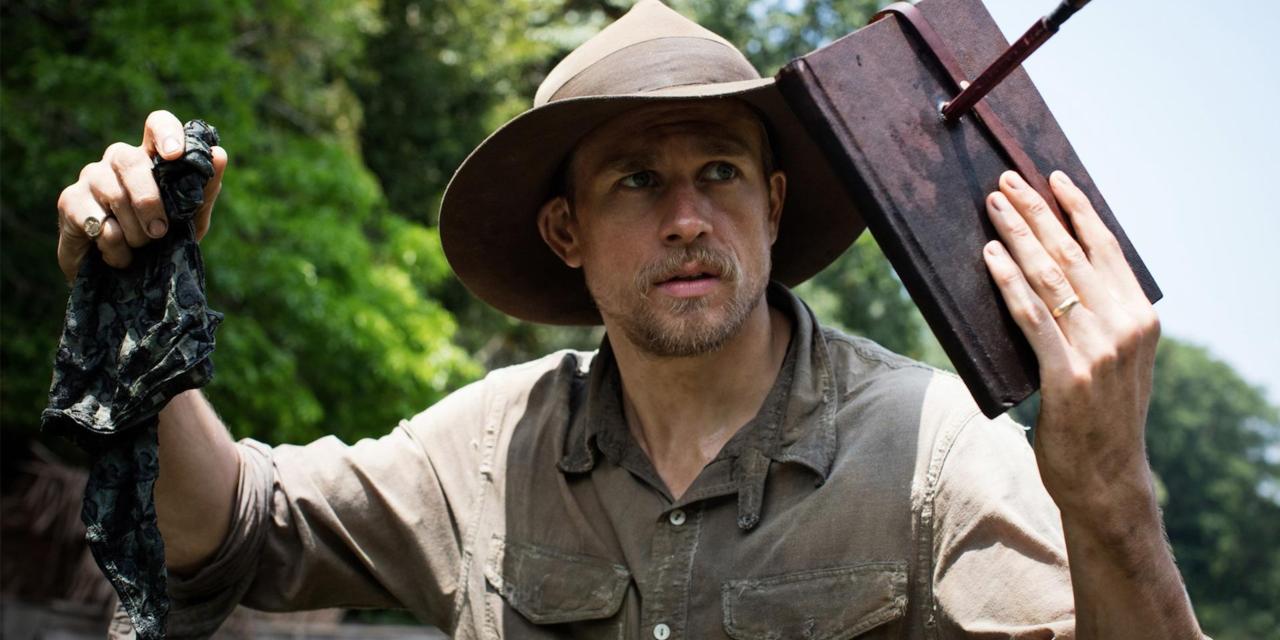
MPAA Rating: PG-13 | Rating: ★★★★
Release year: 2017
Genre: Adventure, Biography Director: James Gray
In Joseph Conrad’s Heart of Darkness and its Francis Coppola adaptation Apocalypse Now, the journey up a river into the jungle is a voyage into the darkest regions of the human mind, a spiral into madness and depravity. While the motif of a river adventure is the central premise in James Gray’s dreamy The Lost City of Z, this journey is not into darkness, but towards enlightenment. A fire emerges on the darkened screen in the movie theater, piercing the darkness with a glowing warmth that beckons the viewer to look closer as enigmatic figures moving on the edges of the light appear with a menacing grace. The Lost City of Z is an exploration of both external and interior worlds, both the created order and the human soul, where the lines of passion and obsession blur in a lush haze.
The Lost City of Z is a leisurely adventure, moving along with the pace of the river, taking its time to bask in the scenery and the characters. Director and screenwriter James Gray chooses a hazy, shadowy lighting and color palette, with warm tones and soft edges, a naturalism to it all. There is something dream-like about the whole narrative, almost like it was conjured up in the imagination and memory of the characters. Based on the real-life tale of British explorer Percy Fawcett and his exploits in South American jungles, this biopic feels like Lawrence of Amazonia or The Life and Death of Colonel Fawcett. Though Gray is an American, the film has a distinctly British tone in the vein of the alluded films–grand epics and gestures of the historical British Empire, while also critiquing the dark colonialist side of English history and propriety. British pride and honor are key motivations for both Fawcett and the Royal Geographical Society who fund his explorations–this is a film about the pursuit of glory.
Fawcett (Charlie Hunnam) is portrayed as an embodiment of progressive ideals. He strives for an egalitarian marriage with his wife, Nina (Sienna Miller), and views the native tribes of South America as human beings, not mere “savages.” Thus, he lives between two worlds, that of the stuffy British aristocracy, and the green-and-gold expanse of the Amazonian jungles. The two environments could not be more different, and Fawcett clearly is most alive when he is outdoors in the wild, away from the collars and tuxedos and expectations. Yet that world of medals and meritocracy still drives him; his initial motivation for his surveys of Bolivia and Peru are to bring renown to his family name. These motives evolve over time as he becomes infatuated with the possibility of a hidden civilization far from his own, but the underlying goal remains the same: glory. To behold the glory, to experience the glorious–it’s not even clear if Fawcett knows exactly what this “glory” means, but he’s certain to find it for himself, even if it costs him his family and livelihood. Hunnam imbues Fawcett with a set-jawed drive that makes him interesting–he’s obsessed and ambitious without being maniacal, fixated and focused on his dream.
Is it possible to be truly great within history while still maintaining a sense of normality, especially within a family? Can a person accomplish great things while still being a good parent and spouse? Fawcett essentially abandons his wife and children due to his obsession; is this praiseworthy or a tragedy? What does he actually accomplish in his pursuits? Why is Fawcett a historical character worth examining? Gray doesn’t necessarily offer up answers to all this, so the plodding narrative becomes cumbersome around the two-hour mark. Yet the final 20 minutes are worth the entire meandering journey as the formal elements become more pronounced and Gray’s depiction enters the terrain of mythology; it’s like Gray is pushing the boundaries of what he’s explored before as a filmmaker, venturing into new territory alongside his characters. Like his previous film, The Immigrant, the power of the film rests on Gray’s choice of the final shot. In both films, we see images in mirrors, meticulously crafted to foster a rich sense of catharsis emerging from the entire cinematic adventure. “To look for what is beautiful is its own reward,” Nina tells her husband in a memory (or is it a dream?). Painterly and haunting, The Lost City of Z is both beautiful and rewarding to behold.
IMDB Listing: http://www.imdb.com/title/tt1212428/
Leave a Reply